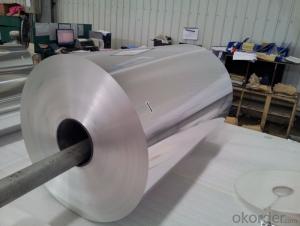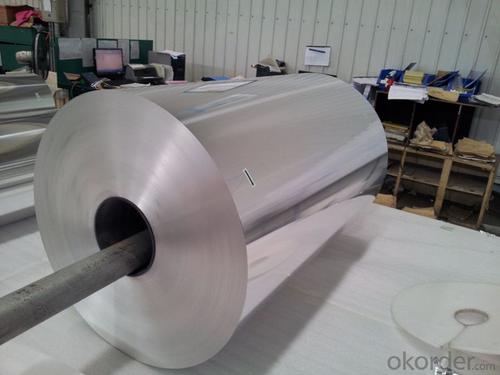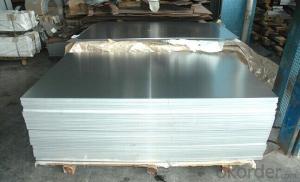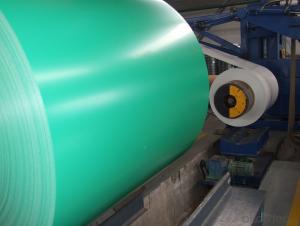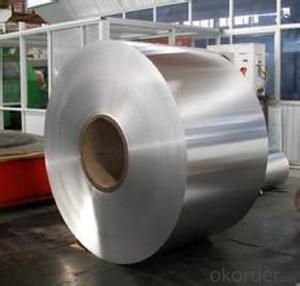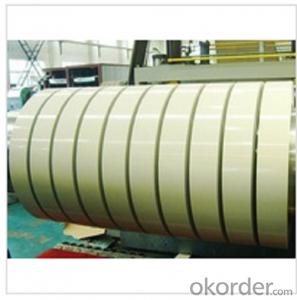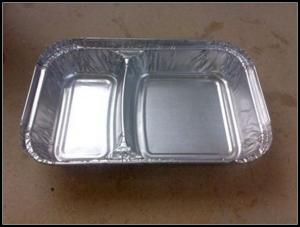Mill Finished Alloy 1235 Aluminum Foils - Current Price of Aluminum Coil 5182
- Loading Port:
- Shanghai
- Payment Terms:
- TT OR LC
- Min Order Qty:
- 5 m.t.
- Supply Capability:
- 2000 m.t./month
OKorder Service Pledge
OKorder Financial Service
You Might Also Like
Specification
1. Structure of Mill Finished Alloy 1235 Aluminium Foils Description
Aluminum foil is widely used in medicine packaging, especially for Asian market. Because the good anti heat and anti wet specification, it's very good for packaging tablets and food. Noramlly for medicine packging, the quality should be higher than food packaging. For medicine packaging, we usually use direct casting quality, but for food packaging, we usually use continuous casting quality. All our aluminum foil for medicine packaging with soft temper is DC quality.
2. Specification of Mill Finished Alloy 1235 Aluminium Foils
Alloy 1235
Temper Soft / hard
Process DC
Thickness12mic~30mic
Width400mm~1650mm
Core ID76mm / 152mm
Chemical Composition
Alolly 8079% MaximumSi0.05~0.13Fe0.7~1.3Cu0.05Mn0.02Mg-Cr-Ni- Zn0.1Ti0.02Zr-Others0.15
Property
Tensile strength70~100MpaElongation3.5%~7%Bursting80~270Kpa
3. Advantage of Mill Finished Alloy 1235 Aluminium Foils
We've been specialized in aluminium foil for more than ten years, we know this product very well, and we have good finacial support from government. Meanwhile, 8079 with direct casting has better elongation and bursting data.
4. Feature of Mill Finished Alloy 1235 Aluminium Foils
Surfact Quality :
Be free from Oil Stain, Dent, Inclusion, Scratches, Stain, Oxide Dicoloration, Breaks, Corrosion, Roll Marks, Dirt Streaks and other defect which will interfere with use,
Mechenical Property:
Chemical Composite and Mechanical Property
5. Certificate of Mill Finished Alloy 1235 Aluminium Foils
SGS and ROHS(if client request, paid by client), MTC(plant provided), Certificate of Origin(FORM A, FORM E, CO), Bureau Veritas and SGS (if client request, paid by client), CIQS certificate
6. Image of Mill Finished Alloy 1235 Aluminium Foils
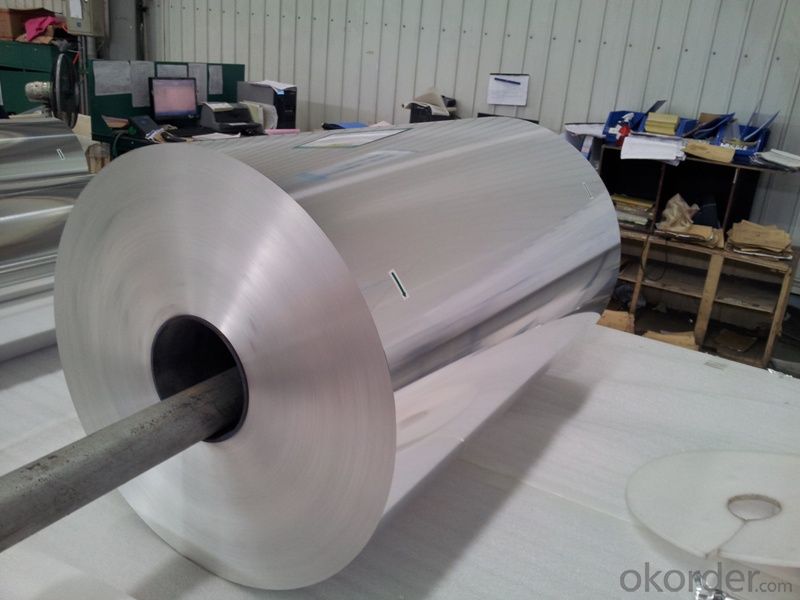
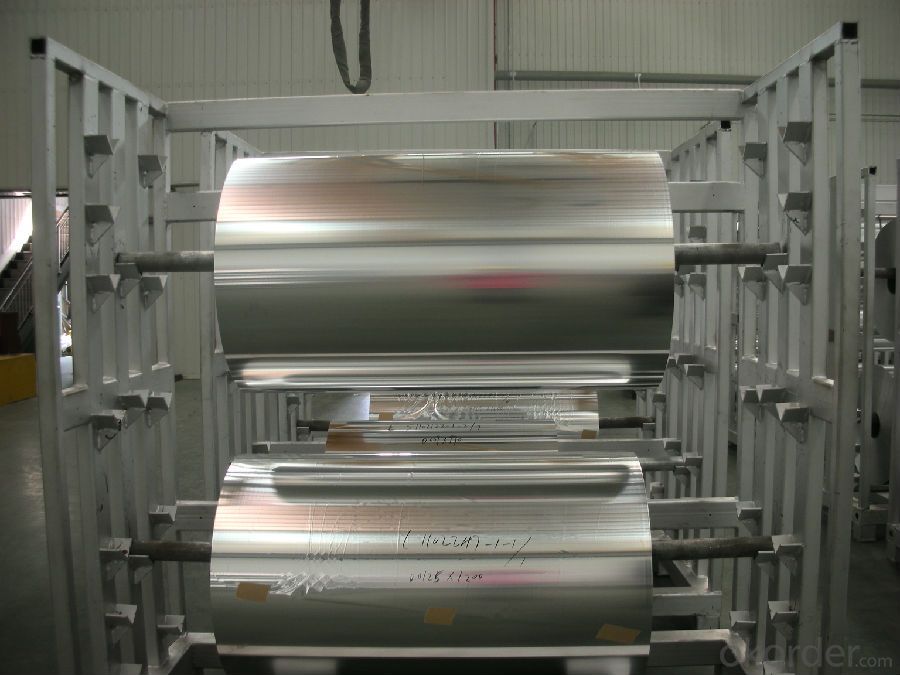
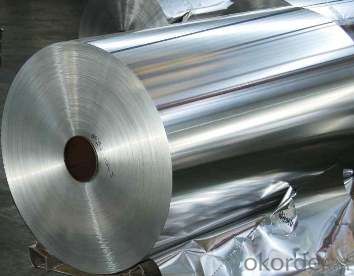
7. Package and shipping of Mill Finished Alloy 1235 Aluminium Foils
First, plastic cloth with drying agent inside; Second, Pearl Wool ; Third, wooden cases with dry agent , fumigation wooden pallets, aluminum surface could cover blue PVC film
8. FAQ
1) What is the delivery time?
Depends on actual order, around 30 to 40 days
2) What is the QC system:
We have QC staff of 20 persons and advanced equipment, each production is with MTC traced from Aluminum ingot lot.
3) What market do you mainly sell to?
Australia, America, Asia, Middle East, Western Europe, Africa etc
- Q: Aluminum metal is oxidized in aqueous base with water serving as the oxidizing agent. Al(s) + H2O(1) → Al(OH)4- + H2(g) (basic solution) Write a balanced equation for this reaction in basic solution.
- First of all, Aluminum is oxidized from 0 to +3 oxidation states. Hydrogen is reduced from +1 to 0. We need to balance the half-reactions. Remember to first balance the elements (that are not O or H); then balance the O's with H2O; then balance the H's with H+; then balance the charges with e-'s. Finally, make sure the electrons balance for each of the half-reactions. Then you add them up. 4 H2O + Al -- Al(OH)4- + 4H+ + 3 e- 2 e- + 2 H+ + H2O -- H2 + H2O I'll multiply the first equation by 2 and the second by 3 so we exchange the same number of electrons. 8 H2O + 2 Al -- 2 Al(OH)4- + 8 H+ + 6 e- 6 e- + 6H+ + 3H2O -- 3 H2 + 3H2O --------------------------------------... 8 H2O + 2 Al -- 2 Al(OH)4- + 2H+ + 3 H2 Since it's in a basic solution, we will hydrolyze the H+ 8 H2O + 2 Al -- 2 Al(OH)4- + 2H+ + 3 H2 2H+ + 2OH- -- 2 H2O --------------------------------------... 6 H2O + 2 Al + 2 OH- -- 2 Al(OH)4- + 3 H2
- Q: What are the different coil cutting options for aluminum coils?
- Aluminum coils have various options for cutting, depending on the project's specific needs. Some common choices include: 1. Shearing involves using a shear blade to cut straight through aluminum coils. This method is ideal for thinner gauges of aluminum. 2. Slitting cuts aluminum coils into narrower strips by passing them through rotating circular blades. It is commonly used in industries like roofing, automotive, and packaging. 3. Cut-to-Length is a method where aluminum coils are cut into individual sheets of desired lengths. The process involves uncoiling, leveling, and cutting with a flying or stationary shear. This option is suitable for applications requiring precise sheet lengths. 4. Laser Cutting utilizes a high-powered laser beam to melt and vaporize the metal, resulting in clean and precise cuts. It is often used in aerospace and electronics industries for cutting complex shapes and patterns. 5. Waterjet Cutting involves using a high-pressure jet of water mixed with an abrasive material to cut through the coils. It is particularly effective for thicker gauges of aluminum without heat-affected zones or material distortion. These options provide different ways to cut aluminum coils. The choice of method depends on factors such as the desired end product, required precision, material thickness, and production volume. Considering the project's specific requirements is crucial in selecting the most appropriate cutting option.
- Q: Can aluminum coils be used in the production of sporting goods?
- Yes, aluminum coils can be used in the production of sporting goods. Aluminum is lightweight, durable, and corrosion-resistant, making it suitable for various sports equipment like baseball bats, tennis rackets, golf clubs, and even bicycles. The use of aluminum coils allows manufacturers to create high-quality and high-performance sporting goods.
- Q: The choice between Vinyl and Aluminum? By Mastercraft Exteriors
- The choice between Vinyl and Aluminum? It is a common question that we hear from our clients, “Which is better, aluminum or vinyl?” Although aluminum siding was traditionally thought to be more durable, today’s vinyl products are far superior. The remodeling panels used in today’s siding markets are on average double the thickness of the aluminum. Most vinyl siding panels have fade warranties, high wind and tensile strength guarantees and insulate the home from both temperature variances and noise. Aluminum siding is also painted for appearance which can scratch easily showing the metallic underside. This is far different from vinyl, where the manufacturing process includes “through color” consistency. Vinyl siding can be ordered in traditional Straightlap and Dutchlap of all sizes, simulated cedar shake and scallop panels, and board batten. In most cases during insurance claim remodeling an upgraded vinyl panel can be substituted for the amount allotted for the aluminum siding. Another reason Mastercraft Exteriors supports the use of vinyl panels during the remodeling process, is its ability to be serviced. If a dent occurs in aluminum siding the surrounding panels must also be replaced to fix that one dent. Vinyl siding can be easily switched out in a matter of minutes, keeping the cost down to the client. Mastercraft Exteriors
- Q: This question asks for a comparison of the benefits and drawbacks associated with using aluminum coil.
- <p>Aluminum coil offers several advantages such as high strength-to-weight ratio, corrosion resistance, and excellent thermal and electrical conductivity. It is also cost-effective and easy to form, making it ideal for various applications like construction, automotive, and electrical industries. However, it has some disadvantages, including lower strength compared to steel, potential for galvanic corrosion when in contact with dissimilar metals, and a higher likelihood of denting or denting. Additionally, aluminum's recycling process can be energy-intensive, which may impact its environmental sustainability.</p>
- Q: How does the alloy composition affect the properties of aluminum coils?
- The alloy composition significantly affects the properties of aluminum coils. Different alloy compositions can alter the coil's strength, corrosion resistance, electrical conductivity, and thermal conductivity. For example, adding elements like copper or magnesium can enhance the coil's strength and improve its ability to withstand high temperatures. On the other hand, alloying elements like silicon or manganese can improve the coil's corrosion resistance. Consequently, the choice of alloy composition is crucial in determining the suitability of aluminum coils for specific applications.
- Q: How are aluminum coils coated for corrosion resistance?
- Coil coating is the process used to apply a protective coating to aluminum coils in order to prevent corrosion caused by exposure to the environment. The first step in this process involves cleaning and pre-treating the aluminum coil to remove any contaminants, such as grease, dirt, or oxidation. Chemical cleaning agents are typically used, followed by rinsing to ensure no residue remains. Once the coil is clean, a primer is applied to act as a bonding agent between the aluminum surface and the subsequent coating layers. This primer enhances adhesion and provides an extra layer of protection against corrosion. After the primer, a topcoat is applied. This topcoat is usually a polymer-based paint that not only provides the desired color and appearance but also acts as a barrier against moisture, UV radiation, and other environmental factors that can cause corrosion. There are various techniques that can be used for the coating process, including roll coating, spray coating, or coil painting. The choice of technique depends on factors such as cost, production speed, and the desired coating properties. In some cases, an additional clear protective coating may be applied to further enhance the durability and longevity of the coated surface, providing an extra level of protection against corrosion. Overall, the coating of aluminum coils for corrosion resistance is a crucial step in ensuring the longevity and performance of products made from these coils. The specific coating process and materials used may vary depending on the application and desired performance requirements.
- Q: Are aluminum coils suitable for pharmaceutical vial caps?
- Pharmaceutical vial caps can indeed be made from aluminum coils. When it comes to pharmaceutical packaging, aluminum is highly favored thanks to its exceptional barrier properties. These properties effectively shield the vials' contents from moisture, oxygen, and other harmful substances. Aluminum coils can be easily molded into caps of various sizes and shapes, accommodating different types of vials. Another advantage is that aluminum is a lightweight material, which makes transportation and handling hassle-free. Additionally, aluminum is resistant to corrosion, ensuring that the vial caps remain intact throughout storage and usage. In summary, due to their barrier properties, versatility, and durability, aluminum coils are a suitable option for pharmaceutical vial caps.
- Q: Are aluminum coils suitable for solar panel applications?
- Yes, aluminum coils are suitable for solar panel applications. Aluminum is a lightweight, durable, and corrosion-resistant material, making it an ideal choice for solar panels. It provides excellent heat dissipation, ensuring optimal performance and efficiency of the solar panels. Additionally, aluminum is readily available and cost-effective, making it a popular option in the solar industry.
- Q: What are the different coil winding methods for aluminum coils?
- There are several coil winding methods for aluminum coils, including hand winding, machine winding, and automated winding. Hand winding is a manual process where the wire is carefully wrapped around the coil by hand. Machine winding involves using a winding machine that automatically wraps the wire around the coil, increasing efficiency and accuracy. Automated winding takes it a step further by utilizing robotic arms or other automated systems to wind the coils, providing even greater precision and speed.
Send your message to us
Mill Finished Alloy 1235 Aluminum Foils - Current Price of Aluminum Coil 5182
- Loading Port:
- Shanghai
- Payment Terms:
- TT OR LC
- Min Order Qty:
- 5 m.t.
- Supply Capability:
- 2000 m.t./month
OKorder Service Pledge
OKorder Financial Service
Similar products
Hot products
Hot Searches
Related keywords
